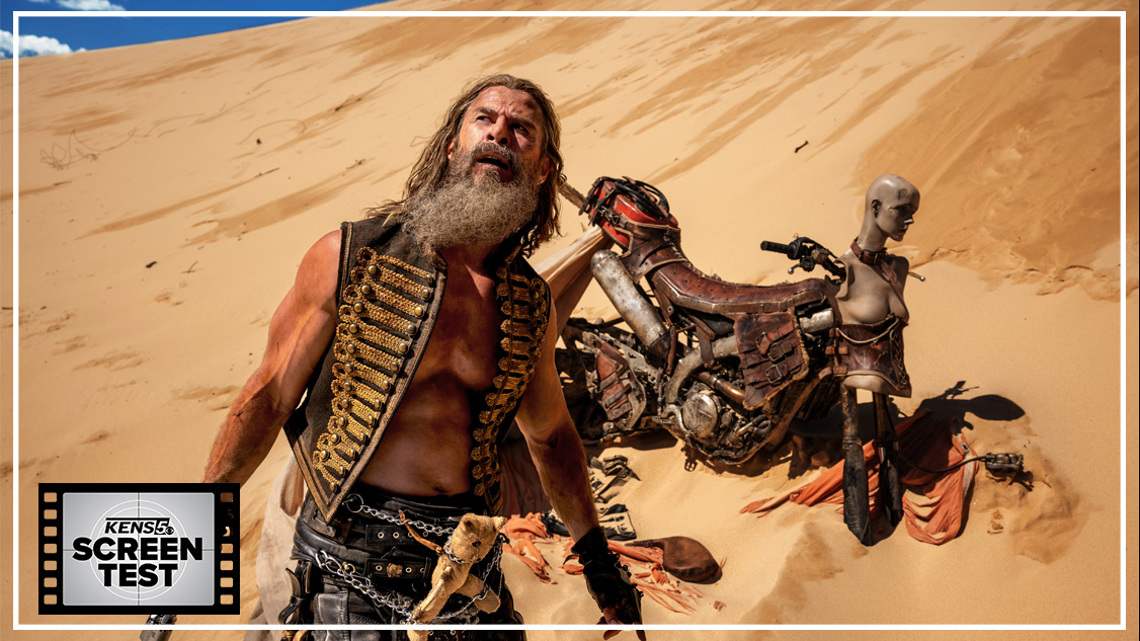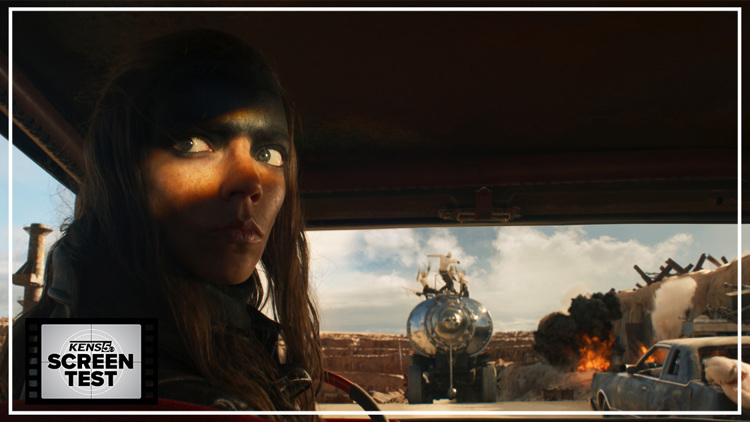SAN ANTONIO — As formidable as he’s proven his skills to be in the fine art of blowing up, launching and crashing cars, George Miller is also a master craftsman in another sense: capturing the human sensitivity that turns chaos into something cathartic, something personal, something essential. In 2015’s “Mad Max: Fury Road” — the 79-year-old Aussie filmmaker’s opus and a blockbuster-sized reminder that our greatest spectacles have dimension to go along with sizzle — that sensitivity was glimpsed in the eyes of desperate survivalists gazing towards what they think to be their salvation. Chief among them: Charlize Theron’s Imperator Furiosa, whose eyes deceive her into seeing something that no longer exists before turning back to make the best of what still does.
In “Furiosa: A Mad Max Saga,” the title character is fully center stage, albeit younger, more volatile, and still learning about how to adapt to the hazards and warlords of the Wasteland without wasting away to it. And though this prequel’s own sequences of rollicking vehicular warfare also herald a movie about finding where you’re heading, it isn’t horizons characters are looking to. It’s to each other, as they try to map the uncharted territory that awaits in someone when the world has become a tinderbox. The expectations going into “Furiosa,” after nine years of establishing and reiterating the filmmaking miracle that is “Fury Road,” is that we’ll be most at attention when things get loud and fast and bloody. But, surprisingly, the most absorbing moments are in what we see, or think we see, in characters’ eyes—how they widen when they see a target, how they soften when they see refuge, how they harden when their instincts shift into another gear in real time (more often than not, that is accompanied with a striking shot of a buggy flying over a sand dune, which Miller still envisions as a balletic act as much as a violent one).
What young Furiosa will learn over the course of “Furiosa” is that, in this dystopia where bullets are a commodity and messianic figures are only ever out for themselves, you can’t rely on others for things like love or hope or the fulfillment of personal vengeance. No one is going to pave her path for her.
This being a Mad Max movie, there’s a lot of shifting gears in the automotive sense. Rather than repeat the pure chase-movie-as-dystopian-power-struggle that “Fury Road” revealed itself to be nearly a decade ago, “Furiosa,” true to its full title, is a sprawling narrative map whose tightening and widening contours indicates something new about the character — first played as a young child by Alyla Browne, a magnetic presence, and later by Anya Taylor-Joy, a formidable one — and the way she maneuvers a dangerous world. The movie opens with young Furiosa’s kidnapping from the Green Place, the mythical place of abundance alluded to but not seen in the previous film, setting up a prolonged rescue sequence that sees her mother (Charlee Fraser) giving chase to a small group of motorcycle-riding outlaws. It’s a smartly engineered prelude, impressive for the intimacy of its carnage, the immediacy of its stakes and the visual language through which the kill-or-be-killed code of the Wasteland is communicated. Furiosa will end up a captive of Dementus (Chris Hemsworth), a flamboyant brute of a gangleader promising a better way of life for his hundreds of followers, though it remains to be clear if he has the goods to deliver (Miller might have seen the allegorical potential in releasing this during an election year).
Here Furiosa is patient and passive, eyeing Dementus with huge, vengeful eyes and a mind that knows it wouldn’t do to strike quickly. And so while the movie’ perspective is anchored on her, the world isn’t—she will be bartered, preyed upon, and thrust into danger to see what she’s made of as a larger conflict ignites between Dementus, the returning overlord Immortan Joe and others. This means the movie at times shifts into a slower gear than “Fury Road" ever found itself in, occasionally idling so key bits of exposition can be shared, new characters introduced (riding eternal, it turns out, may involve some requisite gassing up for the journey). These include Tom Burke, submitting his best 007 audition tape as Praetorian Jack, an upper-ring lackey who specializes in “road war” and whose heart softens when he discovers Furiosa can kick as much ass as he.
But in these moments too, Miller asks us to pay attention to what’s being communicated through the gaze. As it turns out, what we might see makes the later screams, howls and cries pierce all the harder, even as the audacity of the stunts plasters gleeful smiles on our faces. If ever there was a reason to give an honorary award for Best Eye Acting by an Ensemble, “Furiosa” would be a major contender for the way Miller has directed his performers so that eyes signal the contradictions fueling his precious world. Praetorian Jack’s eyes are sad for such an immutable character; Dementus’ are desperate despite his brashness; Immortan Joe’s ferocious despite his meticulousness.


It can’t be overstated how much of an asset — and, given the way of the modern blockbuster, a treasure — Miller’s intentionality is. It sharpens every shot, lubricates every bit of dialogue, shines every set piece with the toughness needed to make “Furiosa” the full-bodied inhale of an experience that further enhances the primal-scream events of “Fury Road.” Whereas that movie is all momentum, “Furiosa” is tense-as-hell primer. The plunger being pulled back, the engine flipping on (pick your metaphor) and if you get choked up it’s probably because we already know Furiosa will never find what she’s looking for, or at least not in the form she expects to. All she can do is adapt and hope she can find a new channel through which to channel her fury, a new dream for which to take the plunge into the oily hellfire of the Wasteland. Here the seven fiery rings are marked not so much by the ways one can die so much as what little there will be left to recognize when the carnage has ended; that the movie leans sharper into war-picture mode than any of the previous Mad Maxes ever did suggests what Miller might think about our capacity to create something out of nothing.
Far be it from me to compare “Furiosa” to another big-budget 2024 desert epic when we should be lucky to have such peculiar visions in a risk-averse Hollywood landscape, but Miller’s film also puts into stark relief the failings (or, more accurately, the limits) of Denis Villeneuve’s “Dune Part Two.” Whereas the odyssey of Paul Atreides is stultified by on-rails storytelling, its psychological power muted by an overreliance on archetype, the saga of “Furiosa” rings louder and truer – shiny and chrome – for how Miller never stops pouring kerosene on the fire that is his worldbuilding. In the meantime Furiosa continues to drive a blazing path through it, her mission given a tragic bent because of how little it might ultimately mean in a world that doesn’t save its breath for heroes. In this wasteland, the journey isn’t about the destination. It’s about the parts of ourselves we lost along the way.
"Furiosa: A Mad Max Saga" is now in theaters. It's rated R for sequences of strong violence and grisly images. Runtime: 2 hours, 28 minutes.
Starring Anya Taylor-Joy, Chris Hemsworth, Tom Burke, Alyla Browne
Directed by George Miller; written by Miller and Nick Lathouris
2024



